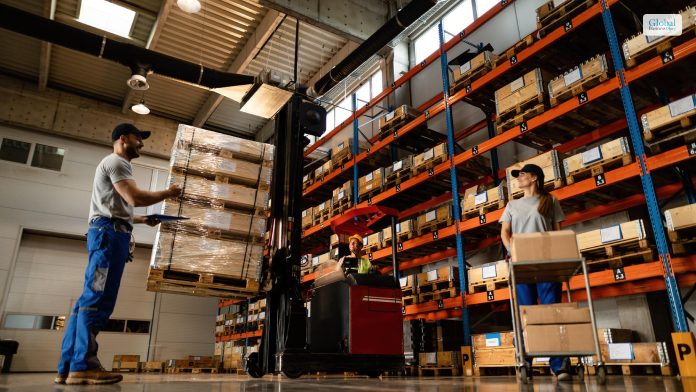How To Start A Business In UAE Free Zones

For entrepreneurs and companies wishing to establish operations in the region, the UAE Free Zones are designated locations inside the United Arab Emirates that provide advantageous tax policies and business laws.
The Free Zones provide a number of advantages for enterprises, including 100% ownership, exemption from corporation and income taxes, and no limits on currency or capital movements. They are intended to draw international investment and foster economic growth in the UAE.
DMCC (Dubai Multi Commodities Centre), Jebel Ali Free Zone, and Abu Dhabi Global Market are a few of the most well-known free zones. These Free Zones are perfect sites for companies wishing to grow their operations in the UAE and abroad because they provide cutting-edge infrastructure, top-notch business services, and access to a big and diversified talent pool.
How Can One Start A Business In UAE Free Zones?
Starting a business in the UAE Free Zones can be a great way to take advantage of the country’s favorable tax and business policies, while also accessing a wide range of business opportunities. Whether you’re looking to set up a new company or expand your existing business, Free Zones in UAE can offer a wealth of benefits that can help you achieve your goals.

Here are some steps you can follow to knowing how to start a business in UAE Free Zones:
1. Choose The Right Free Zone
The UAE has several Free Zones, each with its own set of rules and regulations. Therefore, it’s important to choose the right Free Zone based on your business needs. The top popular Free Zones in the UAE are Dubai Multi Commodities Centre (DMCC), Jebel Ali Free Zone (JAFZA), and Abu Dhabi Global Market (ADGM).
Each Free Zone has its own set of advantages and disadvantages, so it’s important to research them and choose the one that suits your business requirements.
2. Determine Your Business Activity
Determining your business activity is a crucial step when starting a business in the UAE Free Zones. Each Free Zone has its own set of permitted activities, and it’s important to ensure that your business falls within the allowed categories.
Before you can obtain a license and start operating your business, you need to provide a detailed description of your business activity and ensure that it complies with the regulations of the Free Zone you’re applying to.
To determine your business activity, you need to identify the goods or services that you plan to offer, and then cross-reference them with the permitted activities of the Free Zone.
For example, if you plan to set up a tech startup, you’ll need to ensure that your business activity is classified under the technology or IT sector of the Free Zone. Similarly, if you plan to import or export goods, you’ll need to ensure that your business activity falls under the logistics or trading sector of the Free Zone.
3. Decide On The Company Structure
When setting up a business in a Free Zone, you can choose between several company structures, such as a Free Zone Establishment (FZE), a Free Zone Company (FZCO), or a Branch of a Foreign Company.
Each structure has its own benefits and drawbacks, so it’s important to research them and choose the one that suits your business requirements.
4. Gather The Necessary Licenses
You must get the required permits to conduct business in the Free Zone once you have settled on the firm structure. Depending on the nature of your firm, several sorts of licenses could be needed.
For instance, you’ll need a trade license if you’re starting a trading firm. Similarly to this, you’ll need a manufacturing license if you’re starting a business. Depending on the regulations of the Free Zone you select, you could additionally need extra licenses and permissions.
5. Register Your Business
After obtaining the necessary licenses, you need to register your business with the relevant authorities. This includes obtaining a business registration certificate and registering for VAT, if applicable.
The process of registration can vary depending on the Free Zone you choose, so it’s important to research the specific requirements for your chosen Free Zone.
6. Open A Bank Account
Opening a bank account is an important step when starting a business in the UAE Free Zones. Having a local bank account makes it easier to manage your finances, receive payments, and make transactions in the local currency.
Most Free Zones have partnerships with local banks, which can make it easier for you to open a bank account, but you’ll still need to provide the necessary documentation and meet the bank’s requirements.
7. Hire Employees
If you plan to hire employees for your business, you need to obtain the necessary visas and work permits. Most Free Zones have their own immigration departments that can assist you with the visa and work permit process.
The UAE Free Zones offer many opportunities for networking and collaboration. Attend business events and seminars, and connect with other entrepreneurs and business owners in your industry.
This can help you build valuable relationships and gain insights into the local business landscape.
8. Get Professional Advice
Starting a business in the UAE Free Zones can be a complex process, especially if you’re not familiar with the local laws and regulations.
Consider getting professional advice from lawyers, accountants, or business consultants to ensure that you’re following all the necessary legal requirements.
Conclusion
Starting a business in the UAE Free Zones requires careful planning and research. By following these steps, you can set up your business and take advantage of the many benefits that the Free Zones have to offer.
With favorable tax policies, a stable economy, and access to a wide range of business opportunities, the UAE Free Zones can be an excellent choice for entrepreneurs and businesses looking to expand their operations.
Read Also:













